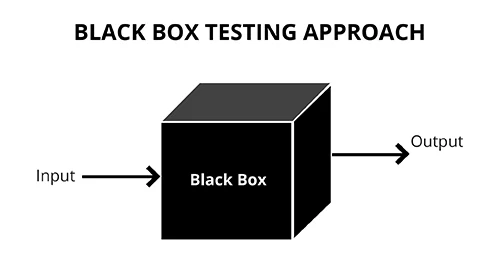Testing Techniques
Testing is a crucial part of software development that ensures the quality and reliability of the final product. There are various testing techniques that developers and testers use to validate and verify the functionality and behavior of a software application. These techniques can be broadly categorized into two types: black box testing and white box testing.
Black Box Testing:
Black box testing is a type of testing where the tester does not have any knowledge of the internal workings of the application. In this technique, the tester focuses on the inputs and outputs of the software without considering its internal code structure. Black box testing is typically performed from an end-user perspective and aims to validate the functional and non-functional requirements of the application.
 |
| Black Box Testing |
Examples of Black Box Testing Techniques:
-
Equivalence Partitioning: This technique is used to divide the input domain of the software into equivalent classes. The goal of this technique is to reduce the number of test cases by selecting representative values from each class. For example, if a software application accepts a number between 1 to 1000, the tester can choose values such as 1, 50, 500, and 1000 to test the application's behavior.
-
Boundary Value Analysis: This technique focuses on the boundary values of the input domain. The goal is to test the software's behavior at the boundaries and verify if it handles values correctly. For example, if a software application accepts a number between 1 to 1000, the tester can choose values such as 0, 1, 1000, and 1001 to test the application's behavior.
-
Error Guessing: This technique involves using the tester's experience and intuition to guess potential errors in the software. The tester creates test cases based on their knowledge of the application's behavior and likely errors. For example, if a software application requires a username and password to log in, the tester can create test cases where the user enters incorrect passwords or forgets their username.
White Box Testing:
White box testing is a type of testing where the tester has knowledge of the internal workings of the application. In this technique, the tester focuses on the internal code structure and design of the software to validate and verify its functionality. White box testing is typically performed by developers and aims to ensure the software's code is efficient, maintainable, and meets the design requirements.
Examples of White Box Testing Techniques:
-
Statement Coverage: This technique involves testing each statement in the code to verify if it executes correctly. The goal is to ensure that each statement in the code is executed at least once during the testing process.
-
Branch Coverage: This technique involves testing each branch or decision point in the code to verify if the correct decisions are made. The goal is to ensure that all possible paths of execution in the code are tested.
-
Path Coverage: This technique involves testing all possible paths of execution in the code to verify if they behave as expected. The goal is to ensure that all paths in the code are executed at least once during the testing process.
In conclusion, both black box and white box testing techniques are essential for validating and verifying the functionality and behavior of a software application. While black box testing focuses on the inputs and outputs of the application, white box testing focuses on the internal code structure and design. By using a combination of these techniques, developers and testers can ensure the software is reliable, efficient, and meets the design requirements.










0 Comments